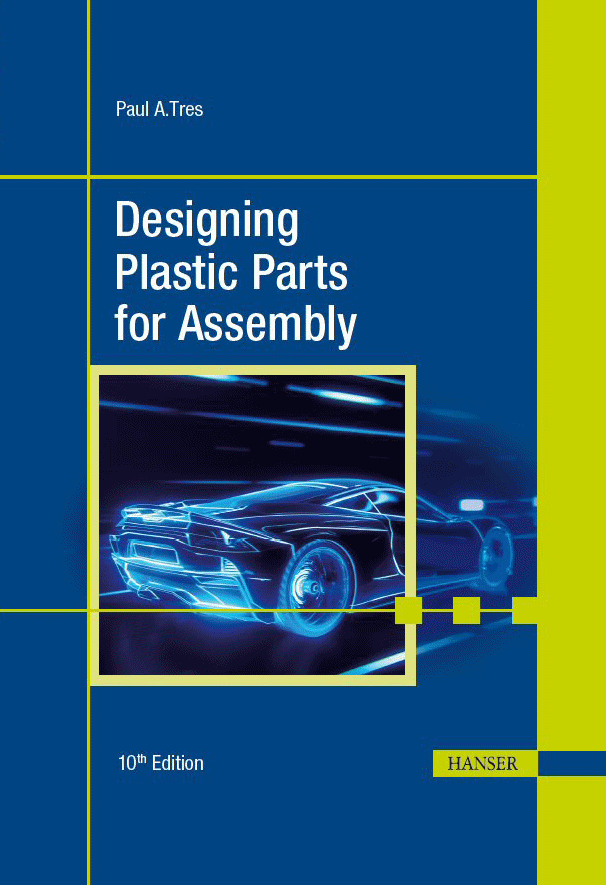Designing Plastics Parts for Assembly
|
Preface to 10th Edition Paul A. Tres
|
The first edition of this book was released in 1994 and now, 30 years later, the 10th edition is available. Over the course of so many years many updates and additions have been included to each edition. In part, this was possible because many design concerns and new ideas came to my attention, some from the readers of the previous textbook editions, but the bulk of new add-ons came from the participants to my seminars. More than 20,000 designers, engineers, and managers attended the seminars during the last 36 years. They came from many countries, including Canada, France, Germany, India, Korea, Malaysia, Mexico, Thailand, and the United States of America, among others. There have also been many legal cases involving consumer products (among them: digital wrist watch made by MBZ, wheel barrel made by AMES Companies, snow thrower made by MTD Products, and Omnibook™ 300 notebook computer made by HP), medical devices (among them: dental applicator Icon® made by DMG of Hamburg, Germany, hospital beds made by Hill-Rom, surgery beds made by Stryker, and defibrillators made by Survivalink™), recreational products (among them: baby playpen made by Evenflo, swimming pool steps made by S. R. Smith, and paintball masks made by Save Phace™), and many boats and vehicles components (among them: 550i and 750i transmission holding bracket from BMW, Corvette C6 rear quarter side panel from GM, Dodge Nitro sports utility vehicle driver side airbag door made by Chrysler, Chrysler 300M air intake manifold, Ford heat ventilation and air conditioning unit, General Motors 3.5-liter engine cover, Honda Accord power lumbar support, Mercedes-Benz M-Class windshield washer bottle and engine cover and C-Class tumble valve, Mercury Marine V8 engine and Tesla Model 3 door panels), which failed one way or another, hurting or even killing people. Over the years I included many examples on how the products failed and how they should have been designed to perform properly for the entire life span they were intended for. In this latest edition some typos have been fixed and two new sections have been added. The first one, included in the first chapter, describes the important role that the coefficients of linear thermal expansion and contraction play in the performance of the component for the duration of its entire lifespan when large temperature gradients are present while the product is in use. The second addition is in Chapter 5. It describes a rather new thermoplastic welding process for assembling polymeric components, called hot gas welding. The joint design is also discussed in this section, so that if this novel manufacturing process is selected by a designer or engineer, the suggested joint design, fully explained in the chapter, can be easily and productively used. The World Wide Web References, related to the Plastic Part Design section at the end of the textbook, have also been updated, covering: Associations and Organizations, Books and Magazines, Consulting Companies, Forums, Material Databases, Material Suppliers, Museums, Rapid Prototyping, Testing and Research, Tips on Design and Processing, Tooling, and Universities.
|

